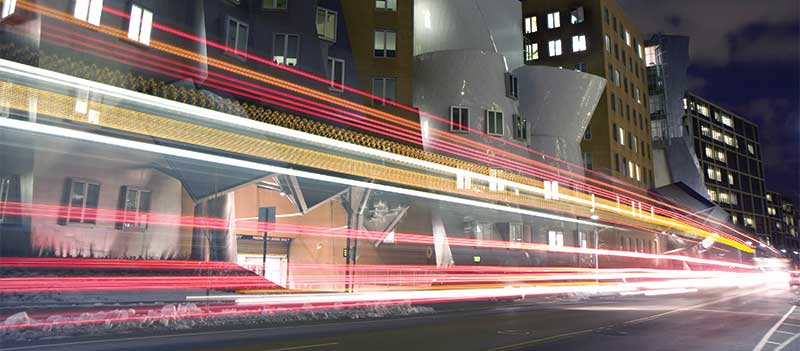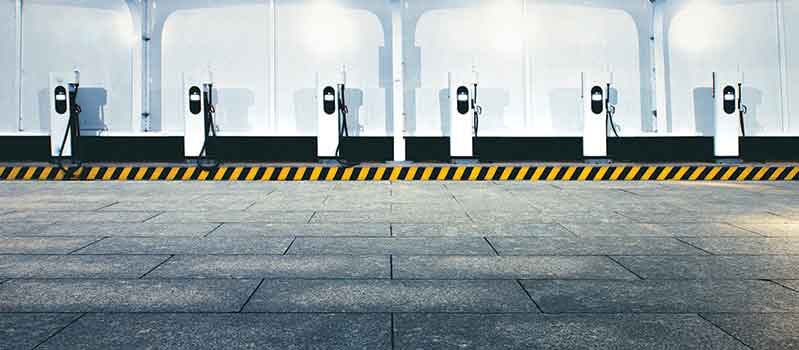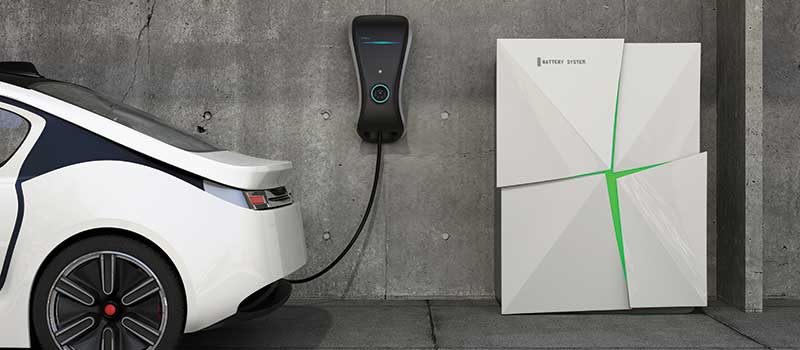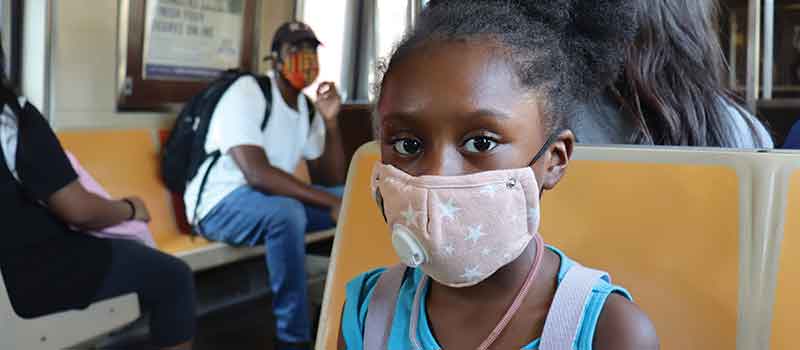When my partner and I moved to Vermont last year, we knew we couldn’t make it work without a car. Apartments near Montpelier, a city of fewer than 8,000 people, get rural fast. Factor in snowy winters, limited public transit, and no sidewalks or streetlights mere blocks from downtown, and we knew a car was essential for our life outside of Boston.
Owning a car is a fact of existence for many of us living in New England. Especially in the northern states and outside of major cities, you need a car to get to school and work, run errands, go to appointments, and see friends.
But working at CLF has changed how I think about transportation. It’s not just about having a car or taking the bus. It’s a complicated puzzle made up of 1,000 tiny pieces – and the impacts of how we get around touch everything from local health to global climate change. What’s more, the burdens of those harms affect some communities more than others, and even basic access to transportation is not a given for too many New Englanders.
I’ve now lived in Providence, Boston, and Montpelier – three state capitals with very different transportation systems and needs. One factor unites them all: the need to transform those systems.
That overhaul is coming – by necessity. Over 40% of New England’s climate-damaging emissions billow from the exhaust pipes of our cars, trucks, semis, buses, and trains. We cannot solve climate change without cutting that pollution. And in the process, we have a unique opportunity to reimagine our region’s transportation systems as ones that are both affordable and accessible to everyone.

Nine Years to Clean Transportation
“By 2030, we want New England’s transportation systems to be clean,” says Emily Green, a senior attorney at CLF. “That means not emitting air pollution or climate-harming carbon pollution.”
For years, Green has focused on slashing these emissions by swapping out gas guzzlers for electric cars, trucks, and buses. That includes ensuring that New England states set and meet ambitious targets for getting electric vehicles on the road, and that our electricity grid is ready to power them with clean, renewable energy. It’s a winning proposition, since electric vehicles can slash both carbon emissions and toxic air pollution. That will improve public health while also saving people and businesses money on gas and maintenance.
So, how do we get there by 2030?
One piece of the puzzle involves making it easier – and financially attractive – for people to purchase an electric car, including those who wouldn’t buy one otherwise. That means state governments expanding rebates and incentives on both new and used vehicles.
Another critical puzzle piece? Infrastructure to support electric vehicles. Between Providence and Boston, only one of the places I lived had a driveway. It was a shared driveway, too. So even if I’d had an electric car, I couldn’t have plugged it in.
Says Green: “What’s going to be really important is making sure that everyone has somewhere to charge – that people who live in multi-unit dwellings, apartment buildings, or other complexes have rights to charge and access to chargers.”
Well-thought-out charging infrastructure would have solved the issue for me in Boston or Providence. And even in Montpelier, where a 40-mile drive to Costco or the doctor’s office is routine, smartly placed charging stations – at grocery stores, hospitals, schools – would do the trick. And for longer trips? A network of fast chargers along highways throughout the region.
At first glance, this seems like a relatively straightforward problem to solve, albeit one with lots of moving parts and players: Make it easy and affordable for people to swap their gas- or diesel-powered vehicle with an electric model, give them plenty of places to charge, and make sure utilities have enough renewable energy on the grid to handle the electricity usage.
But remember that 1,000-piece transportation puzzle I mentioned earlier? Here’s where all the other pieces fit in.

Making Transportation Work for Everyone
We can’t overhaul our transportation systems without acknowledging the ways they currently fail, and even harm, some people more than others. Specifically, Black, Brown, and low-income communities have the least access to affordable, reliable public transit. Often adjacent to airports and bisected by major highways, these same communities are also overburdened by vehicle pollution and noise. This can lead to serious health issues like asthma and COPD, which have been linked to higher rates of illness and death from COVID-19.
Take Chelsea and Everett, Massachusetts. Route One cuts through both communities, which also lie under major flight paths for Logan Airport. Residents there breathe in the exhaust from tens of thousands of daily car commuters, not to mention the daily noise and pollution from hundreds of flights overhead.
It’s not just pollution that’s a problem, though. Accessibility, affordability, and reliability are also major issues of equity. Chelsea and Everett residents who work in downtown Boston often have to ride crowded, consistently slow-moving buses through rush-hour gridlock daily.
On the other hand, Somerville and Cambridge – where I lived for several years – have far better access to public transit. It’s no coincidence that residents of those communities are wealthier and whiter than those of Chelsea and Everett. Even living there, however, I still spent hours soaking up air and noise pollution in packed subway stations, waiting for chronically late trains that were often too full to board. I was even late to my first day of work at CLF because of a broken train car, despite building extra time into my schedule.
I still felt lucky, though, that I could get by on public transit, as unreliable as it was then (and still is today). Many people can’t: essential workers who don’t have a car, folks paying hand over fist for increasingly expensive commuter rail passes, families barred from better job opportunities because there’s no way to get to work without a vehicle or reliable transit. For people in rural areas, public transit often isn’t an option at all.
When transportation investments are made, too often they’re not funneled to the communities that need them most. “Federal funding provides way more funds for highways than for transit,” says Staci Rubin, a CLF senior attorney. “We need to ensure that our most overburdened and underserved communities are getting a higher portion of resources to get improved transportation options in their neighborhoods.”
As we reinvent our transportation systems to slow and adapt to climate change, it’s not just an opportunity, but a necessity, that we address these long-standing injustices. We cannot fix one problem while ignoring the other. The future of transportation should not only be clean, but just.
“When we talk about just transportation systems, that means that they’re affordable, they’re reliable, they’re safe, and they don’t jeopardize one community to benefit another,” says Rubin. It’s not just about changing to an electric bus. It’s ensuring that bus reaches every neighborhood, runs at useful times (on time), is accessible to people living with disabilities, and is affordable for everyone to ride.
So now when we look at 2030 and add this justice-oriented lens, the question becomes: How do we make zero-emission transportation the norm in a way that is just? How do the pieces of the puzzle fit together in the parts of New England that I’ve called home?
Let’s start with my current home state of Vermont. “For rural communities, it means that not every household needs to purchase their own electric vehicle. It looks like van-sharing services that can help people get around instead. It looks like expanded broadband access so that people can conduct more of their business online,” says Rubin.
These days, my doctor’s office is a 45-minute drive down the highway. But it can take up to three hours by public transit. Having an option to get there that doesn’t require multiple bus transfers and an entire day spent on one appointment would be a game changer.
In cities like Boston and Providence, meanwhile, it looks like well-funded public transportation systems that reach further outside each city and run later into the evenings and on weekends. It’s low-income transit fares and electric buses prioritized for routes in environmental justice communities. It’s bus-only lanes on highways and busy streets to ensure buses run on time. And it’s separated bike lanes on roads so those who want to pedal aren’t risking their lives every morning on their way to work.

Building an Electric Car Culture
Often when we talk about these solutions, the question of cost inevitably comes up. But any conversation around the costs of electric vehicles or new infrastructure should also give weight to the many benefits that accompany them. Tackling climate change will save billions of dollars in avoided costs from big storms, heat waves, and other extreme weather. But we’re also improving public health by cleaning up air pollution, saving money on car maintenance and gas, and helping people gain economic mobility through expanded transit options.
For the better part of 12 years, I didn’t own a car. No car payments, no winter shoveling, no trips to the mechanic. If I could, I still wouldn’t own one. Transforming our transportation systems – making them more reliable, more affordable, more accessible – would make that a viable option, especially for those who can’t afford a car (or currently can’t afford not to have one, even if it doesn’t fit within their budget).
Ultimately, by 2030, our transportation systems can no longer rely on fossil fuels. And part of solving the puzzle to get there includes addressing long-standing injustices and creating transportation systems that work for everyone.
While we have been taught to associate car culture with freedom, transportation is fundamentally about access: to the things we need, the things we want, the places and people we care about. And we can have that access with cleaner cars – and for some people, by removing the need for cars at all.
All of this requires systems-level change. It requires us to think beyond individual actions like buying an electric car or choosing to take the bus. With smart planning now – from state leaders, legislators, and utilities – we can that ensure everyone has access to what they need.

Piecing It All Together
Reinventing New England’s transportation systems is complex work that involves both state-level policy, legislation, and regulatory changes, as well as regional planning and cooperation. CLF is uniquely positioned to work on the ground in each New England state while also maintaining a bird’s-eye view of how those local decisions reverberate regionwide. Here are just a few of the levers CLF legal advocates are pushing now.
Climate Laws. CLF has successfully pushed Massachusetts, Maine, Connecticut, and Vermont to pass laws requiring steep emissions cuts before 2050. (We are currently focused on getting Rhode Island to join them this year.) To reach these targets, states are developing climate plans – all of which include ramping up the number of electric vehicles on the road as well as the infrastructure to support them.
The Electric Grid. Not only are electric cars a clean, quiet way to get around, but they’re also giant batteries that will spend most of their time plugged into the grid. Instead of turning on the dirtiest, most expensive power plants when electricity demand spikes – which is what happens now – the grid can use the clean power stored in the batteries of our parked electric cars and trucks. With these batteries distributed throughout New England, the electric grid will be cleaner and more resilient – and electricity will be less expensive. That requires modernizing our infrastructure and rethinking how our regional grid works – both priorities for CLF in the years ahead.
The Transportation and Climate Initiative. The Transportation and Climate Initiative is designed to cut emissions from transportation across the Northeast and Mid-Atlantic. While good in theory, it’s disappointing as written. Most critically, it lacks community input and the accountability to ensure systems-level change that will benefit overburdened and underserved residents. Also, its current framework won’t meaningfully slash emissions, boost air quality in pollution hotspots, or improve transportation options for communities that need them the most. However, the Initiative’s current framework provides an opening for CLF to push for more, including policies that will improve air quality in communities near highways and ports rather than focusing narrowly on cutting statewide emissions.
GET INVOLVED You can help CLF push the levers of power to transform New England’s transportation systems. Find out how at clf.org/transportation
